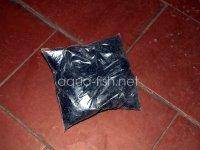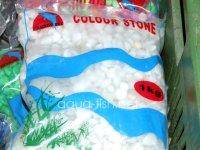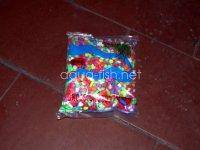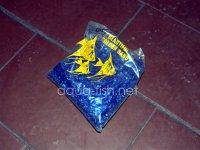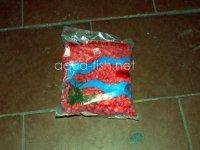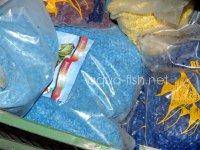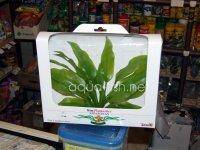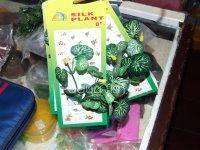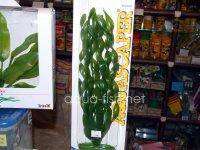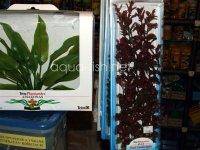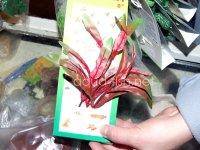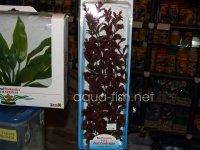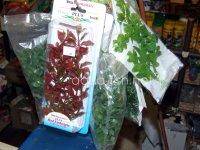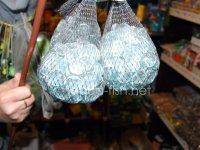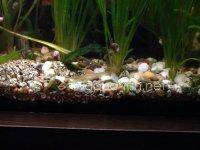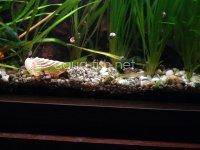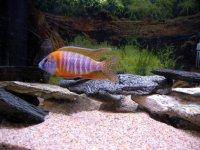Aquarium Gravel: Old fashioned, or just overlooked?
Brief Description
In case you'd like to purchase aquarium gravel, simply click this link (it will open in new window)! The article below informs about types of aquarium gravel and answers most asked questions. You're welcome to share your experiences or ask questions at the bottom of this page!
Aquarium gravel has been the staple substrate for fish tanks and aquariums for many years, but is it still popular, still needed, or just something that we use because it’s simple?
The answer to this is complex. Aquariums have become works of art in the last few years, ranging from simple ornament displays to heavily planted and beautiful aquaria. Because of the change in opinions about fish keeping and the desire to explore new avenues of design and appearance, gravel has been replaced by hi-tech substrates in many aquariums. Products like Flourite, which are enhanced with nutrients to sustain plants have become more common, sand has become a very common substrate in aquaria because of the ease with rooting plants, and substrates like marbles and glass beads have become popular because they look nice!
The improvements in filtration have also helped common aquarium gravel to be pushed out, as the newer filtration systems such as HOB (Hang on Back) and Canister filters don’t need a gravel substrate to help them to work, unlike the UGF (Under Gravel Filter) which for many years was the most common aquarium filter in use.
So, do we still use gravel in our tanks? Many aquarists do still use gravel for basic tanks or those die-hard’s that still use UGF to maintain their tanks. Others will use aquarium gravel as part of the décor, with a vast range of colours and sizes available to them. People who breed fish will still use gravel to enhance their breeding tanks, where they need specific environments for the task, or if they use UGF to keep the water conditions stable.
As author of this article, I will openly admit that I use aquarium gravel in all my tanks, so I may be biased; I also use UGF for most of my smaller aquariums as my choice of filtration, mainly because of ease of maintenance as well as cost! However, I am in the minority now, as most have opted to go down the route of external filtration and planted tanks. This is not a problem, its called progress! Saying that though, this is where the gravel issue comes to point.
Do you need aquarium gravel? No. Many aquariums are very happy without it. Many aquarists prefer to use alternatives to build their tanks around, making aesthetically pleasing aquaria, with everything in balance, lots of plants, more colour and stunning looks! I love to see a well maintained planted tank with lots of luscious green plants and the need to look hard to find the fish!
So do you want to use aquarium gravel? That is your choice. It depends entirely on what final effect you want to obtain and the type of filtration you choose. Most small aquariums with basic ornaments and a few plastic or silk plants will tend to use gravel as the substrate for several reasons:
- Aquarium gravel is cheap to buy, costing just a few dollars/pounds for a reasonable sized bag,
- Aquarium gravel is simple to use, needing nothing more than a quick wash to remove the dust.
- Plastic and silk plants bury very easily in the gravel, and most need the weight to hold them in place.
- Ornaments can be placed directly onto the gravel substrate without any problems of stirring up the sediment.
- Maintenance is simple. A gravel vacuum during water changes is the only regular maintenance needed.
- If using UGF, gravel is an essential part of the filter, being home for the nitrifying bacteria.
- If you have a strong current in the tank, caused by the filter outlet, many substrates will lift and become water borne, whereas gravel will stay on the bottom. (I once had almost a whirlpool in a small tank and all the sand I was using as substrate was pulled into the current and very quickly blocked the filter!)
These points aside, the alternatives are also attractive.
Glass marbles look really stunning in small aquaria and are safe and clean to use. A gravel vacuum works just as well on these to clean the detritus from the bottom and for some fish, these are better for breeding, since eggs can fall out of reach of the parents between the large substrate.
If you want a planted tank, don’t write off gravel as a substrate. It works very well with most plants, giving them a stable base to root into, and most will thrive with little additional assistance. Liquid fertilizer being the main additive required. Even if you have a UGF, plants root very well in gravel in most situations. Yes, many use other substrates, but they pay for the privilege, as most other substrates cost substantially more than common aquarium gravel.
This picture was provided by Peter. The gravel is mixed with sand.
Sand is now replacing gravel in many tanks. This is an ideal medium for many plants and fish, and so long as you don’t have anything to disturb the bottom too much, it gives a very pleasing result. However, it is much harder to keep clean, as traditional methods don’t work, but if you are careful with feeding etc, it works well.
If you have a large aquarium, you could consider having more than one substrate. It is not unusual for large aquariums to have a changing theme running along the length, ie, heavily planted at one end running to rocky open-water the other. Here you can test your skill and try different substrates to give the different effects.
Whatever you choose to use for substrate, plan carefully before you start, as mistakes are not always easy to rectify. As for me, I still prefer the regular, common, plain aquarium gravel in all but large tanks, but that’s just my opinion!
The first layer of the substrate in my aquarium:

